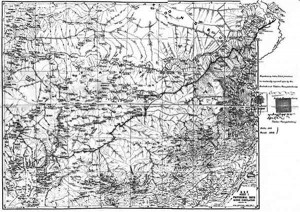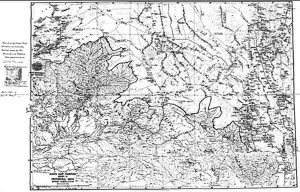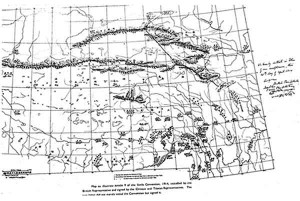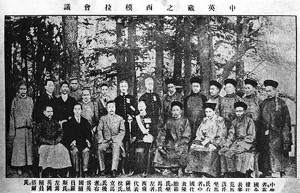China is becoming increasingly aggressive across the Himalayas for multiple reasons. She takes pride in her ‘Middle Kingdom’ legacy but this mentality is laced with guilt from decades of humiliation. As she faces no serious external threat, chances of conflict in the East China Sea/South China Sea are few unless China herself ups the ante despite conventional inferiority vis-à-vis the US, which she is trying to offset through asymmetric means. Similarly, there is no serious existential threat to China but the restive regions of Xinjiang, Inner Mongolia and Tibet need to be managed deftly. Plus failure to address the imbalance between the neo-rich coastal areas and the majority agricultural heartland is a recipe for instability. China simply wants to accelerate the boundary resolution with India and Bhutan because this will help stabilise Tibet and Xinjiang.
Doklam Plateau, if occupied by China, will turn the flanks of Indian defences in Sikkim and endanger the Siliguri Corridor…
Of the 33 territorial disputes in South Asian Region listed out by Wikipedia, nine are between India and China; Aksai Chin, Shaksgam, Arunachal Pradesh (termed South Tibet by China), and Demchok, Chumar, Kaurik, Shipki La, Jadh and Lapthal – all areas between Aksai Chin and Nepal. Then are 11 territorial disputes between China and Bhutan, some of which can have adverse effects on India, should China resort to occupying these areas forcibly. Additionally, Chinese semi-permanent presence in Gilgit-Baltistan exponentially complicates resolution of India-Pakistan territorial disputes.
China is becoming increasingly aggressive across the Himalayas for multiple reasons. She takes pride in her ‘Middle Kingdom’ legacy but this mentality is laced with guilt from decades of humiliation. As she faces no serious external threat, chances of conflict in the East China Sea/South China Sea are few unless China herself ups the ante despite conventional inferiority vis-à-vis the US, which she is trying to offset through asymmetric means. Similarly, there is no serious existential threat to China but the restive regions of Xinjiang, Inner Mongolia and Tibet need to be managed deftly. Plus failure to address the imbalance between the neo-rich coastal areas and the majority agricultural heartland is a recipe for instability. China simply wants to accelerate the boundary resolution with India and Bhutan because this will help stabilise Tibet and Xinjiang.
Territorial Dispute
Of the nine territory disputes between India and China, two major chunks of territory are the Aksai Chin and Arunachal Pradesh. All other disputed areas lie south of the McMahon Line. Aksai Chin’s importance to China is the Xinjiang-Tibet Highway that China surreptitiously built in the 1950s. Arunachal Pradesh lies south of the McMahon Line. With regard to the Aksai Chin, the Sikhs had captured Ladakh and invaded China in 1841 but were defeated which led to a treaty between the Sikhs and China in 1842. This 1842 treaty stipulated no transgressions or interference in the other country’s frontiers.
Of the nine territory disputes between India and China, two major chunks of territory are the Aksai Chin and Arunachal Pradesh…
Then in 1846, the British defeated the Sikhs which resulted in the transfer of sovereignty over Ladakh to the British. Successive British commissioners attempted unsuccessfully to meet with Chinese officials to discuss the border they now shared. Both sides were apparently sufficiently satisfied that a traditional border was recognized and defined by the natural elements, Karakoram Pass and Pangong Tso Lake. However, no boundary demarcation was done and the Aksai Chin area continued to be undefined.
In the Eastern region, British India and China had gained a common border after the British annexed Assam on conclusion of the First Anglo-Burmese War (1824-1846). This resulted in the Treaty of Yangdabo in 1826. Further British annexations through the subsequent Anglo-Burmese War expanded China’s borders with British India eastwards, to include the border with Burma (now Myanmar). In 1914, representatives of Britain, China, and Tibet attended a conference at Simla in India and drew up an agreement concerning Tibet’s status and borders. The McMahon Line was decided upon during the 1914 Simla Convention. The agreement was signed by representatives of British India, Tibet (Lonchen Shatra Dorje) and China (Ivan Chen), all affixing full signatures to the agreement and the appended maps showing the alignment of the McMahon Line on the maps.
Copies of these maps and the photograph showing the attendees of the Simla Convention in 1914 are shown below:
Representatives of those days are equivalent to Ambassadors today notwithstanding the fact that the designation ‘Representative’ is still prevalent, as indicated by the ‘Special Representatives’ of India and China that currently continue to discuss the sensitive boundary issue. But despite the Chinese Representative (Ivan Chen) having affixed signatures to the 1914 Simla Convention Agreement, China reneged on it saying that the Chinese Representative did not have the permission of the Chinese Government, which is a lame and absurd excuse.
The McMahon Line was decided upon during the 1914 Simla Convention…
The 1962 Sino-India War was fought in this territory. An agreement to resolve the dispute was concluded in 1996, including ‘Confidence-Building Measures’ and a mutually agreed LAC but in 2006, the Chinese ambassador to India stated that all of Arunachal Pradesh is Chinese territory. This was followed up with a military build-up and numerous incursions in the region, some penetrating more than a kilometre.
Pillaging the Himalayas
China’s Himalayan loot began silently in the 1950s by transcending the boundaries of Tibet and steamrolling the occupation of Aksai Chin (38,000 square kilometres) that was part of Ladakh region of Jammu and Kashmir acceded by Maharaja Hari Singh to India post Partition. China’s National Highway 219 repaved recently runs now through Aksai Chin connecting Tibet with the Xinjiang region. This Chinese move was not mere territory grab but part of a larger integrated politico-military strategy that looked far into the future taking into consideration the long term requirements of resources, particularly energy that would increase in gargantuan proportions, plus the security of the long supply lines.
In Pakistan, perpetually in search of its identity, China has found an easy ally. Pakistan ceded the Shaksgam Valley (some 6,000 square kilometres of Indian Territory) to China. China resolved her borders with all countries less India and Bhutan, which was by design. In certain areas Chinese claim lines kept extending progressively as the years went by – from 1959 the claim line to more demanding one in 1963 and subsequently extending further in 1969 and 1975 so forth and so on.
The push for India’s withdrawal from the Saltoro Range in the Siachen area is part of the same plunder of the Himalayas…
A rapidly radicalizing Pakistan had launched an institutionalised jihad to kill the maximum number of ‘Shias’ on her own territory, particularly Gilgit-Baltistan. In Pakistani calculus, subcontracting itself to China is one solution to stabilise the region that will also nip any Indian designs westwards. China naturally grabbed the opportunity, initiating strategic footprints into Pakistan/POK. Reportedly, Pakistan is to lease out the Gilgit-Pakistan region to China for 50 years. Pakistani analysts also say that China wants to establish permanent bases in POK, which will become the geo-strategic pivot of China-Pakistan for forays into Afghanistan and Central Asia.
The push for India’s withdrawal from the Saltoro Range in the Siachen area is part of the same plunder of the Himalayas. Chinese ingress in Nepal is for the same reason. PLA soldiers in uniform have been sighted in northern Nepal by foreign journalists. Further east, China has been claiming the Doklam Plateau and Chinese road built between Zuri and Phuteogang Ridge that overlooks the disputed Charithang Valley. Doklam Plateau, if occupied by China, will turn the flanks of Indian defences in Sikkim and endanger the Siliguri Corridor. Hitherto, China was laying claims only to Tawang. Having got Tibet on its plate, China has suddenly staked its claim to entire Arunachal Pradesh since 2006. What more proof is needed of Chinese irredentism? This is perhaps the ultimate objective in Operation ‘Himalayan Plunder’ for gaining control of the Himalayas right from POK all the way to Arunachal.
Ladakhi & Bhutanese Enclaves in Tibet
What remains shrouded in history are the Ladakhi and Bhutanese enclaves in Western Tibet. The Ladakhi enclave consists of the village of Minsar (Men ser), near Lake Manasarovar (Ma pham), and its surrounding land, while Tconsists of Darchen (Dar chen) Labrang and several smaller monasteries and villages near Mount Kailas (Gangs rin po che, Ti se). The Ladakhi estate of Minsar which the King of Ladakh/J&K retained was ostensibly to meet the religious offering expenses of Lake Manasarowar and Mount Kailas. These enclaves were entirely surrounded by the territory of the Dalai Lama, but Ladakh (superseded by the government of Jammu and Kashmir after 1846) and Bhutan continued to raise revenue there for some 300 years.
In Pakistani calculus, subcontracting itself to China is one solution to stabilise the region that will also nip any Indian designs westwards…
The status of these Enclaves has continued to be ambiguous. By the 20th century, both Kashmir/India and Bhutan claimed to hold their lands in full sovereignty. By contrast, the Lhasa government acknowledged that Ladakh/Kashmir and Bhutan held certain rights. Nevertheless Tibet tried to exercise its own authority as though the enclaves were no more than foreign-owned estates on Tibetan territory. These disputes were never fully resolved. When the Chinese invaded the area they never paid any compensation to either to Ladakh/Kashmir or to Bhutan. As such, these continue to be disputed territory. What is significant is that Chinese claim to Tawang is on the basis that the Tibetans visit the ancient Tawang Monastery every year to pay obeisance. By the same analogy, the Ladakhi enclave consisting of village Minsar (Men ser) and its surrounding lands should revert to India, while Tconsists of Darchen (Dar chen) Labrang and several smaller monasteries and villages near Mount Kailas (Gangs rin po che, Ti se) should revert to Bhutan for annual pilgrimages.
Major Cross Border Incidents
Earlier this year, Defence Minister A K Antony had stated in Parliament that nearly 600 border transgressions had taken place along the 4,057 km long Line Of Actual Control (LAC) in the past three years (since 2010) and that some of these incursions were deeper than in the past. All these have been denied by China. However, in the unending list of cross border transgressions over the years, there have been three major ones. The first one was in September 1967 at Nathu La where the Chinese without warning opened fire on India troops on the bare stretch of the pass itself and followed it up with artillery fire. India suffered some 70 casualties. However, the Indian response was so intense that all Chinese defences at Nathu La and shoulders of the pass were razed to the ground and by own admission, the PLA suffered heavy losses with about 400 dead.










China has an identity of various ethnic considerations, that the Chinese see as indications. The border near Aksai Chin, is supposed to have no identity that is Ladakhi, on the Chinese side of the border. Similarly, the dispute with the Vietnam govt. was similar. The Chinese wanted to demarcate the border with Pakistan also. It seems, that the population at the borders need to have a certain affiliation with China, and this is important, to some distance within her borders, and not exactly near the border. I agree that precautions must be adhered to, when guarding the border, but a nation can also start a war, being over cautious.
This is an important idea that has occurred. The Chinese can guard a section of the border, that has no Indian troops there, and the Indians can guard a section, where there will not be any Chinese troops. When Chinese nationals cross the international border, the nature of modern statehood, deems it that it wasn’t an accidental crossing. The improved infrastructure in Tibet, is so that people don’t cross over easily, from India and from Tibet. There must be toll booths, and guards on the Tibet border.
Gen you write well I remember the days (1974) sitting on LALGARH POST in Sikkim and counting Yaks grazing with a 20x telescope as it was estimated that 40 Yaks could move a Independent Chinese Brigade group to cut the Siliguri corridor it never happened but a herd of Musk deer always exceeded the number alternating between India and Tibet where ever the grazing was good. Yes there was a difference when they went out they were more on coming back were a bakers dozen less (they bred in India but killed in occupied Tibet) just old reminiscences.
In Actual fact due course of time I became G3 (INT) of the division and the chinkiese started insulting Indira Gandhi through loudspeakers we lost no time in relaying on our PA system about Mao and every became quiet at Jelep La the chinks became sheep.
The moral of the story is the Chinese system is very fragile if we start counter propaganda they will come down on their knees.
Fight we will to liberate Tibet with weapons if required but why not ? defeat communism without firing a shot like the Americans did with the USSR.
to sum up you are warrior (Yodha) please contact on email address dalji96@rediffmail.com
Gen lets fxxxxk them for once, democracy will win
It seems our Politicians & Bureaucrats of MOD have not yet fully realised the danger of EXPANSIONIST CHINA.The Armed Forces need to be upgraded urgently along the entire Indo-China border..The Indian army urgently need 2 Mountain Strike corps along the indo china borders.. One of these should be based in Arunachal Pradesh. If neccessary, a new North-East command should be created as the Eastern Command has heavy responsibilities. Also, the ITBP & SSB need to be put under the operational command of the Army. Prithvi Missile Regiments need to be close to the Sikkim-Bhutan-Siliguri areas to prevent the Chinese from choking the Siliguri corridor.